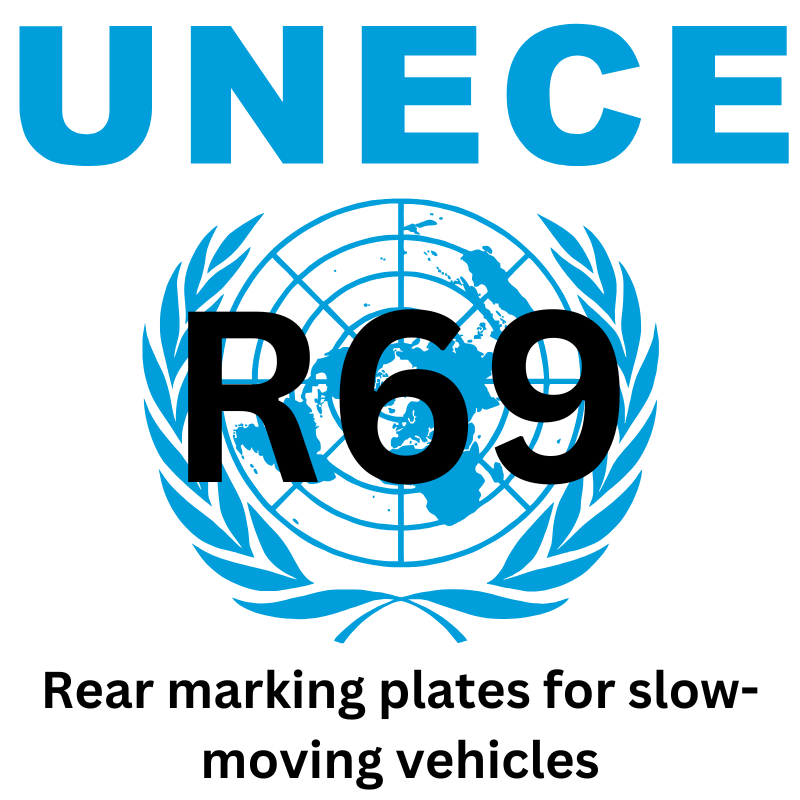Guide To: UNECE R69 - Rear marking plates for slow-moving vehicles
23 July 2023

Guide To: UNECE R69 - Rear marking plates for slow-moving vehicles
UNECE Regulation No. 69 focuses on the approval of rear marking plates for slow-moving vehicles (SMVs) and their trailers. These plates are essential safety devices designed to improve the visibility of vehicles that, by construction, cannot travel faster than 40 km/h. The regulation sets out comprehensive requirements for the design, performance, and durability of rear marking plates, ensuring they are effective in both day and night conditions.
Key Provisions of UNECE Regulation No. 69
The regulation specifies technical standards that rear marking plates must meet to ensure their functionality and visibility. These standards cover various aspects, including:
Shape and Dimensions: Rear marking plates for slow-moving vehicles must be triangular with truncated corners. The dimensions are strictly defined, with a base length between 350 mm and 365 mm and a retro-reflective border width of 45 mm to 48 mm.
Material and Construction: The marking plates must be made from retro-reflective or fluorescent materials. Class 1 plates include both retro-reflective and fluorescent materials, while Class 2 plates use retro-reflective materials only.
Colorimetric and Photometric Requirements: These plates must meet stringent colorimetric specifications to ensure visibility. The retro-reflective areas are typically red, with specific chromaticity coordinates that must be adhered to. Photometric specifications ensure the plates reflect light efficiently, making the vehicle visible to other road users, especially at night.
Resistance Tests: The regulation mandates various durability tests to ensure the plates withstand environmental conditions. These include:
- Heat resistance
- Water resistance
- Impact resistance
- Corrosion resistance
- Resistance to fuels and cleaning agents
Installation Requirements: The plates must be installed at specific heights and positions on the rear of the vehicle. They should be visible from both the rear and the sides to ensure maximum visibility in traffic.
As part of an effort to streamline vehicle safety standards, UNECE Regulation No. 69 has been incorporated into the broader UNECE Regulation No. 150, which governs retro-reflective devices and markings for vehicles. Regulation No. 150 consolidates several earlier regulations (including Regulations Nos. 3, 27, 69, 70, and 104) into a single comprehensive framework, simplifying compliance for manufacturers and improving regulatory efficiency.
By merging the provisions of Regulation No. 69 into Regulation No. 150, UNECE has ensured that rear marking plates for slow-moving vehicles continue to meet high safety standards while benefiting from a more unified regulatory approach. The consolidation makes it easier for manufacturers to comply with international standards, and for countries to enforce consistent safety measures across various types of vehicles.
Conclusion
UNECE Regulation No. 69 plays a crucial role in ensuring that slow-moving vehicles are visible on the roads, reducing the risk of accidents, particularly in low-light conditions. With its incorporation into Regulation No. 150, the regulation continues to provide the technical framework necessary for the approval and use of these critical safety devices, while benefiting from greater harmonization in the global regulatory landscape. For manufacturers and vehicle operators, adhering to these regulations is essential for ensuring the safety of both drivers and other road users.